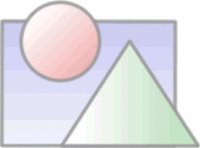OpenRT—Realtime RenderMan Ray-Tracing OpenGL

OpenRT is a realtime ray tracing rendering engine and API. It is designed as powerful as RenderMan by offering all features of ray tracing. And as similar as OpenGL, while as possible. It is RenderMan-like for shader writer and OpenGL-like for application programmers. OpenRT in contrast of OpenGL, supports no immediate mode. This means that every geometry you want to display has to be contained in an OpenRT object. This object has to be instantiated and can then be rendered. This is because ray tracing uses a global approach, not as raster dealing triangles independently.
A non-commercial version of OpenRT can be download from here. But it supports no cluster. And so a dual-core Itanium2 might be a not-so-not-decent processor to run it as a single node. IMHO, OpenRT is designed to run over cluster other than super powerful single node, at least talk against today's computer. I tried the commercial version on my so humble cluster of old old pentium 4s, yet what makes me love it most is that the speedup is so so linear to the number of nodes due to the properties of ray tracing algorithm.
Imagine, realtime RenderMan! Leading digital effects houses and computer graphics specialists use RenderMan and every movie nominated for a Visual Effects Oscar in the last 10 years relied somewhat on RenderMan.
The commercial version is around £40,000 for 16 nodes Itanium2 (IA64). So you see, OpenRT is by no means of Open Source project, only but puns OpenGL.



